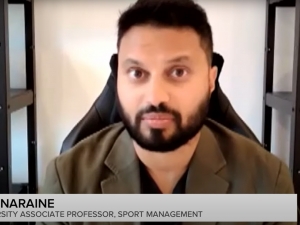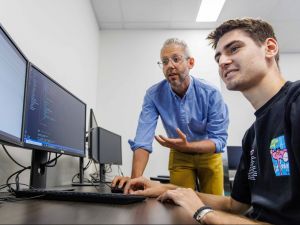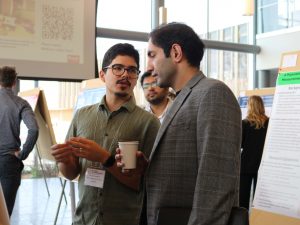 Jackie Lloyd, a master’s student in Applied Linguistics, is researching teaching methods that will help English as a second language (ESL) students learn about and apply English articles in their speech.
Jackie Lloyd, a master’s student in Applied Linguistics, is researching teaching methods that will help English as a second language (ESL) students learn about and apply English articles in their speech.To most native English speakers, using “the,” “an,” and “a” in sentences is instinctual, like breathing or blinking.
But many languages don’t contain such equivalent articles, making it challenging for people learning English as a second language (ESL).
“These articles can be incredibly difficult to truly acquire,” says Brock graduate student Jackie Lloyd. “The accurate use of these articles can indicate whether you’re a native English speaker or an advanced non-native English speaker.”
The master’s student in Applied Linguistics is passionate about coming up with a method that will help ESL students learn about and apply articles in their speech.
To that end, Lloyd has started a study with a group of ESL students. She is giving them a series of six instructional sessions on the use of English articles and comparing which instructions are most beneficial.
“We’re looking at different teaching techniques that activate certain kinds of cognitive processes that are very important in second language acquisition,” says Lloyd.
When learning a new language, the brain’s first task is to break down what initially sounds like gibberish into distinct units recognized as “a salient piece of information,” she said. “This aspect of ‘noticing’ is a big part of second language acquisition.”
Once someone consciously recognizes this particular unit of information, the brain connects it to how it is conceptualized and expressed in the first language “to be able to anchor it to what you already know,” says Lloyd.
Then, the brain goes through a process in which this information is made automatic, so that recalling this information is less conscious “and more implicit and natural,” she says.
The experimental lessons that Lloyd’s research participants are completing online draw upon these various cognitive processes.
Though not being directly measured in the study, she also notes that the brain’s working memory and attention control are very important in the process of learning a new language.
The original research was supposed to be conducted with ESL classes at Brock University, but then COVID hit, making in-person testing and instruction impossible.
Lloyd notes that in-person interaction is “crucial” when learning a second language, but online instruction is still beneficial. She says the online experience has inadvertently become part of her study and may shed light on methods to conduct effective online learning.
Lloyd aims to make her research findings move beyond the theoretical.
“I hope to see some empirical, measurable data to see if there are any particular teaching techniques that are more effective than others so that teachers can use their time effectively in the classroom,” she says.
Her thesis advisor, Assistant Professor Andrew Lee in the Department of Applied Linguistics, values her research initiative.
“What is truly remarkable is the fact that her research attempts to bridge the gap between theoretical and applied research and to reveal teaching practices that could help make language learning more efficient for learners and perhaps more enjoyable too,” he says.
“This connection aligns exactly with what Brock’s core mission sets out to do, which is to nurture academic knowledge and expertise that make a real-life difference to the community in a positive way.”
Lee says Lloyd’s research has been “recognized as impactful to our discipline, and she has already been invited to present her study at top-ranked, reputable conferences such as the annual meetings of the Second Language Research Forum and the American Association for Applied Linguistics.”
There are still a few spots left in the study. Those who are learning English as a second language and wish to participate in the study can contact Lloyd at jk18ju@brocku.ca.








